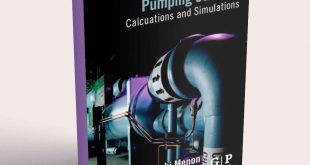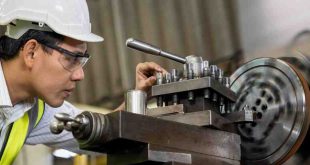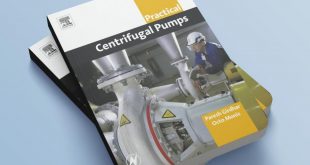Troubleshooting Centrifugal Pumps and Their Systems
Centrifugal pumps are essential components in various industries, used to transport liquids in processes like water supply, wastewater treatment, chemical processing, and many others. Like all mechanical equipment, centrifugal pumps can experience performance issues that can cause inefficiencies, downtime, or even system failure. Troubleshooting centrifugal pumps requires a systematic approach to diagnose problems, identify the root causes, and implement appropriate solutions. This guide explores common issues faced by centrifugal pumps and provides practical steps for troubleshooting them.
Table of Contents
ToggleCommon Problems in Centrifugal Pumps
Before diving into troubleshooting, it’s crucial to understand the most common issues that affect centrifugal pumps. These issues can often be traced back to mechanical, operational, or system-related factors. The most common problems include:

- Cavitation: The formation of vapor bubbles in the pump due to low pressure. These bubbles collapse when they reach areas of higher pressure, causing damage to the impeller and decreasing efficiency.
- Excessive Vibration: Vibration is a common indicator of misalignment, imbalance, or mechanical wear, which can lead to damage if not addressed.
- Low Flow or No Flow: This can occur due to various reasons such as a clogged suction line, impeller wear, or an air lock.
- Pump Overheating: Overheating can be caused by a variety of factors such as inadequate lubrication, excessive load, or poor cooling.
- Leaks: Leaks at various points in the pump system, including seals, gaskets, or piping, can lead to decreased efficiency and potential damage.
- Low Efficiency or Power Loss: A drop in efficiency can be caused by worn components, such as the impeller or bearings, or improper system design.
Diagnosing Pump Problems
Effective troubleshooting begins with diagnosing the problem accurately. Here are some steps for diagnosing centrifugal pump issues:
1. Check Pump Operating Conditions
Ensure that the pump is operating within its designed conditions, including flow rate, head, and power consumption. Use performance curves to compare actual performance with design specifications. If the pump is operating outside of these conditions, it may indicate a problem such as cavitation, impeller wear, or improper system setup.
2. Inspect System Components
Examine key components of the pump system, including:
- Suction and Discharge Pipes: Check for blockages, leaks, or restrictions.
- Valves: Ensure that suction and discharge valves are fully open, and check for wear or malfunctions.
- Pump Bearings: Worn or damaged bearings can cause vibration and overheating.
- Seals and Gaskets: Inspect seals and gaskets for leaks or wear.
3. Measure Pressure and Flow
Use pressure gauges and flow meters to measure system performance. Significant deviations from normal values can help identify where the problem lies—whether it’s with the pump itself, the piping system, or the process.
4. Listen for Unusual Sounds
Unusual noises, such as grinding, whining, or knocking, can indicate internal issues such as cavitation, mechanical wear, or a loose impeller. Identify the source of the sound to narrow down potential problems.
Troubleshooting Specific Problems
Cavitation
Cavitation occurs when the pressure at the pump inlet falls below the vapor pressure of the fluid, causing vapor bubbles to form. When these bubbles collapse, they generate shock waves that can damage the pump impeller and cause a significant loss in performance.
Causes of Cavitation:
- Low suction pressure due to clogged filters, blocked suction lines, or excessive pipe length.
- High pump speed.
- High fluid temperature.
- Excessive system resistance.
Solutions:
- Increase the net positive suction head (NPSH) by improving the suction system or lowering the fluid temperature.
- Install a larger suction line or reduce the length of the suction piping.
- Ensure that the system is operating within the design parameters, including flow rate and speed.
Excessive Vibration
Excessive vibration can be caused by a variety of mechanical issues, including imbalance, misalignment, or bearing failure.
Causes of Vibration:
- Misalignment of the pump shaft and motor.
- Worn bearings or damaged mechanical seals.
- Cavitation.
- Imbalanced impeller or damaged pump components.
Solutions:
- Check and correct shaft alignment.
- Replace worn or damaged bearings, seals, or impellers.
- Balance the pump impeller to reduce vibration.
- Inspect the system for cavitation and address the root cause.
Low Flow or No Flow
A centrifugal pump with low or no flow could be caused by an obstruction in the suction line, an air lock, or excessive system pressure.
Causes of Low Flow:
- Clogged suction line or filter.
- Air lock in the pump.
- Incorrect pump speed or impeller size.
- Valve malfunction.
Solutions:
- Clear any obstructions in the suction line or filter.
- Bleed the pump to remove air locks.
- Adjust the pump speed or impeller size according to system requirements.
- Check and adjust valves to ensure proper flow.
Pump Overheating
Overheating can damage the pump and other components in the system. It’s typically caused by poor lubrication, excessive load, or insufficient cooling.
Causes of Overheating:
- Insufficient lubrication in the bearings.
- High friction due to worn components.
- Overloading the pump or operating outside of design parameters.
- Blockages in the cooling system.
Solutions:
- Ensure that lubrication is adequate and the bearings are in good condition.
- Operate the pump within its design parameters.
- Inspect the cooling system for blockages and ensure proper flow.
Leaks
Leaks can occur in various parts of the pump system, including the seals, gaskets, and pipes. Leaks reduce efficiency and can cause further damage to the system.
Causes of Leaks:
- Worn or damaged seals and gaskets.
- Loose or improperly fitted components.
- Corrosion or physical damage to the pump housing.
Solutions:
- Replace worn seals and gaskets.
- Tighten any loose bolts or fittings.
- Inspect and repair any damaged components.
Vibration Analysis in Pump Systems
Vibration analysis is a powerful tool for diagnosing and troubleshooting centrifugal pump issues. By measuring and analyzing the vibration signals from the pump and motor, engineers can detect problems early, such as imbalance, misalignment, or bearing wear.
Types of Vibration Analysis:
- Basic Vibration Analysis: Involves measuring vibration frequency and amplitude to identify imbalances or misalignments.
- Advanced Vibration Analysis: Involves detailed analysis of vibration spectra to diagnose specific mechanical failures, such as bearing wear or cavitation.
By monitoring vibrations continuously or periodically, maintenance teams can predict when components need attention, thus preventing unplanned downtime and extending the lifespan of the pump.
Managing Critical Pump Systems
Managing critical pumps in a system requires consistent monitoring, preventive maintenance, and effective troubleshooting practices. Some key steps include:
- Routine Inspections: Regularly inspect pumps, bearings, seals, and other components for signs of wear or damage.
- Data Collection: Continuously collect performance data, such as flow rate, pressure, and vibration levels.
- Predictive Maintenance: Use vibration analysis, temperature monitoring, and other predictive maintenance tools to detect issues before they lead to failures.
- Training: Ensure that maintenance teams are trained to identify early warning signs and perform effective troubleshooting procedures.
Real-World Case Studies
Case Study 1: Cavitation in a Water Pump
In a water pumping station, cavitation was causing significant damage to the impellers. Upon investigation, it was found that the suction pressure was too low due to a clogged strainer. After cleaning the strainer and improving the suction system, the cavitation was eliminated, and pump performance returned to normal.
Case Study 2: Excessive Vibration in a Chemical Plant
A centrifugal pump in a chemical plant experienced excessive vibration, which was traced to a misalignment between the pump and motor. After realigning the pump, vibration levels decreased, and operational stability was restored.
Conclusion
Troubleshooting centrifugal pumps requires a thorough understanding of pump operation, system performance, and diagnostic tools. By following a structured approach to identify and address common issues like cavitation, vibration, low flow, overheating, and leaks, engineers can optimize pump performance, extend equipment life, and reduce downtime. Regular monitoring, maintenance, and vibration analysis are essential practices in ensuring the reliable operation of centrifugal pumps and their systems.
 Boilersinfo Boiler and Mechanical Power Digital Library
Boilersinfo Boiler and Mechanical Power Digital Library





